The Japanese composer Tōru Takemitsu wrote his choral work Wind Horse between 1962 and 1966, taking his imagery from Tibet. ‘Tibetan nomads tie pieces of their national dress together, It is said, about the rope. The wind blows and the pieces flutter. It is said that the nomads move in that direction. The idea is to move in the direction the wind invites’ instead of fixing the destination without that guidance. In his music, Takemitsu created a work ‘with the potential for individual voices to go in different directions’. The work contains 3 vocalises that seem to capture the wind.

Tibetan Wind Horses
Tōru Takemitsu: Kaze no uma (Wind Horse) – I. Vocalise No. 1 (South West German Radio Vocal Ensemble; Marcus Creed, cond.)
This use of an invisible metaphorical horse was unusual, however. Sometimes, a horse was just a horse, as in this Chinese work.
Traditional: The Hungry Horse Rattles his Bridle (Takako Nishizaki, violin; Capella Istropolitana; Stephen Gunzenhauser, cond.)
At other times, the horse stood for a larger concept, In Sofia Gubaidulina’s suite Hommage à Marina Tsvetaeva, she sets Tsvetaeva’s poetry where the lame horse and the rusty sword are transformed from the idea of a past leader to a ’leader of crowds’.
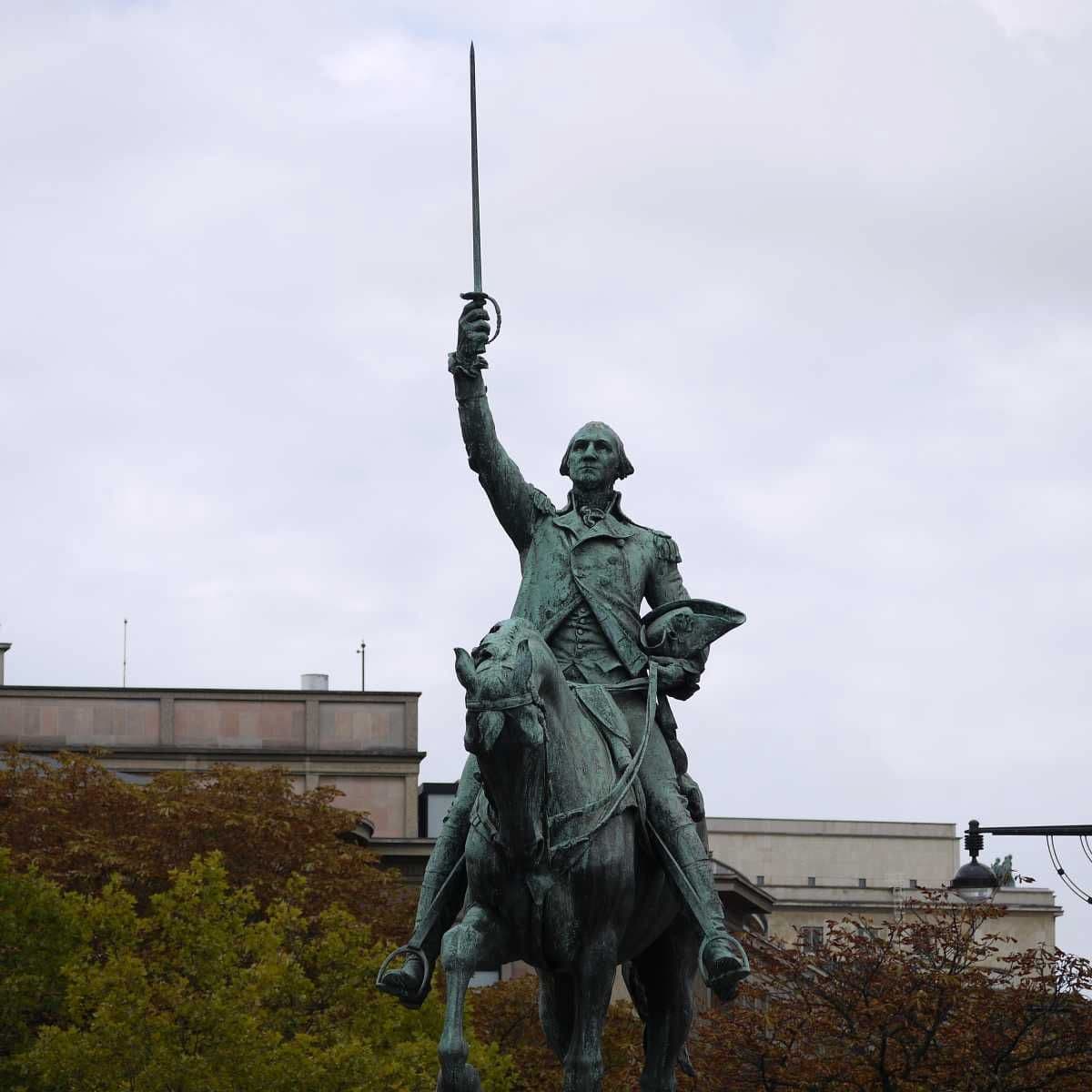
Daniel French and Edward Potter: Statue of George Washington, 1900 (Paris)
Sofia Gubaidulina: Hommage a Marina Tsvetayeva – II. Horse (Wakako Nakaso, soprano; Sabine Czinczel, alto; Alexander Yudenkov, tenor; Mikhail Shashkov, bass; South West German Radio Vocal Ensemble; Marcus Creed, cond.)
Other people than humans are horse riders: Death famously rides a horse, along with his apocalyptic friends War, Plague, and Famine. Gipps based her work on Blake’s image of Death riding out on his pale horse.
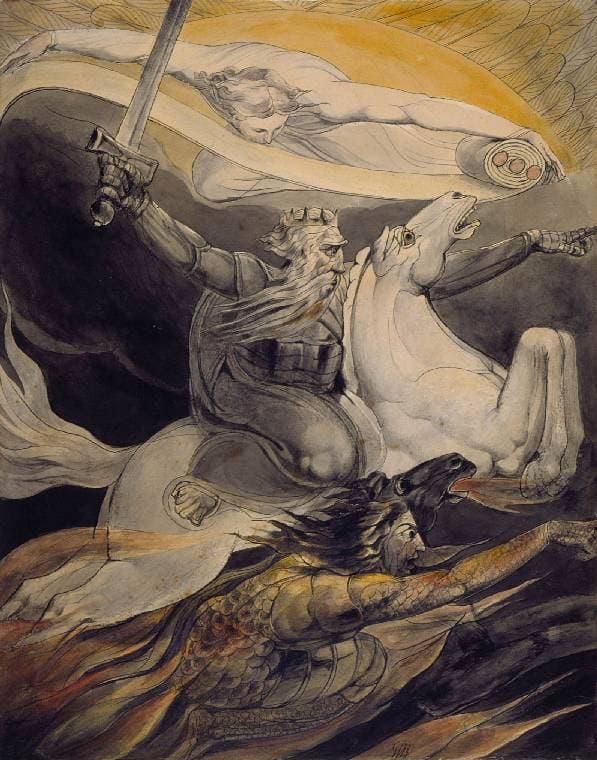
Blake: Death on a Pale Horse, ca 1800 (Cambridge: Fitzwilliam Museum)
Ruth Gipps: Death on the Pale Horse, Op. 25 (BBC Philharmonic Orchestra; Rumon Gamba, cond.)
A song from the 15th century Lochamer Liederbuch also has a horse as a metaphor. In Mir ist mein pferd vernagellt gar (My horse has been badly shod) what starts off as a seemingly unending litany by a rogue about how to cheat people by selling a badly shod horse as something better than it is. The rogue wants to trade in his old nag for a young foal, but the poem ends on a surprising note: ‘I hope to fair better in trade with the man who unhitched me from my love’. And then gives us the end of the story – his trade(s) were successful.
Anonymous: Mir ist mein pferd vernagellt gar (My horse has been badly shod) (Martin Hummel, tenor; Dulce Melos; Marc Lewon, cond.)
In his depictions of the noise and life of the world around him, Charles Ives successfully captured the chaos of life. In this reconstruction of a work he left unfinished, Ives depicts the modern version of a car accident: Runaway Horse on Main Street. ‘It all starts calmly enough as the buggy driver stops to let off a friend and then tries vainly to control his horse’s unruly startup. One can imagine a row of beer-hall doors opening and letting loose the jarring ragtime of a dozen pianists, while the wobbly patrons collect on the sidewalk and try to curb the runaway horse (and its buggy)’.
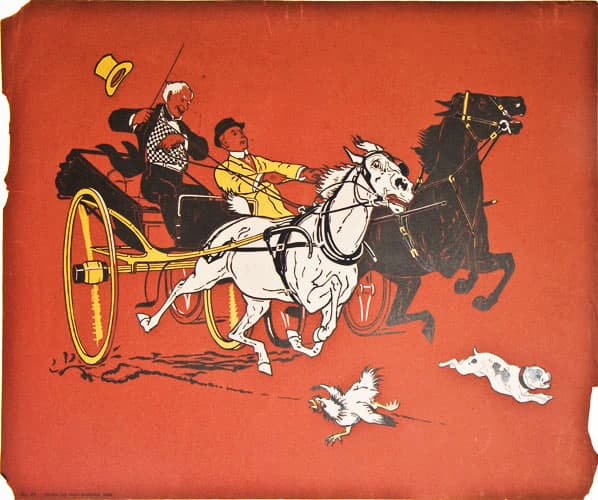
Tolman: Two Men with a Runaway Carriage, 1900
Charles Ives: Runaway Horse on Main Street (The President’s Own United States Marine Band; Timothy W. Foley, cond.)
The pianist Ignacy Jan Paderewski had a long and distinguished career as a pianist and another, less-well-known career as a composer. In this set of four songs, Paderewski successfully captures the feeling of Polish folk music. In the song, the lover wanders on his faithful steed, lamenting the love who has forsaken them both.
Ignacy Jan Paderewski: 4 Lieder, Op. 7 (arr. M. Gumiela for soprano and string orchestra) – No. 2. Siwy koniu (Grey horse) (Alina Adamski, soprano; Capella Bydgostiensis; Mariusz Smolij, cond.)
In her 2005 song cycle, River of Horses, American composer Lori Laitman reflects on the bond between humans and horses, from how the feel of horse hair brings back memories (No. 1. My Hand Forever), an encounter between poet James Wright and some horses he meets while traveling (No. 2. A Blessing), a setting of James Dickey’s poem about the arrival of a baby horse (No. 3. A Birth), an adaptation of a traditional Navajo song (No. 4. The War God’s Horse Song), and closes with another James Wright poem about putting a mare and a stallion into a neighbour’s orchard to get the last of the apples and frolic together, before the neighbour, returning home, drives them out. The composer writes: ‘The vocal line is distinguished by the melismatic word settings and a wordless hummed refrain’.
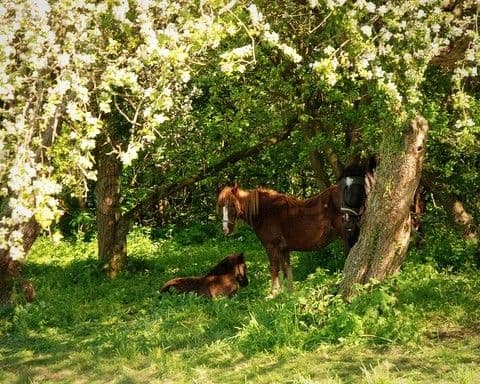
Horse in Apple Orchard
Lori Laitman: River of Horses – No. 5. Two Horses Playing in the Orchard (Jennifer Check, soprano; Warren Jones, piano)
With many more horses to discover, we will close with a magic horse. British composer William Alwyn (1905–1985) composed his cycle for soprano and piano, Invocations, in 1977. The cycle closes with a love song, Our Magic Horse. The poem asked ‘where can we find a magic horse to take our journey among the stars’ so we can travel like fools, look at the world upside down to discover ‘the wonder of pointless things…’.
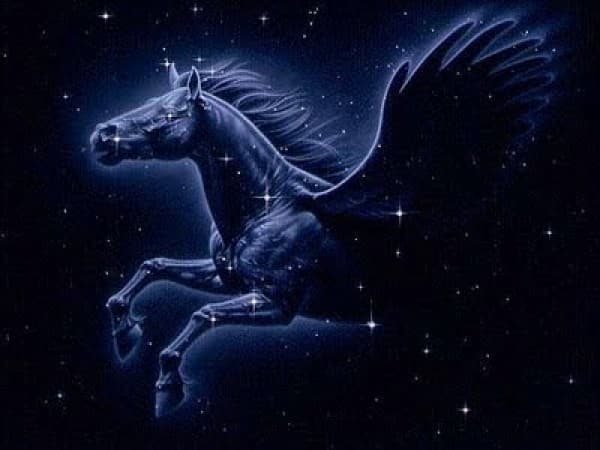
The Constellation Pegasus: The Star Horse
William Alwyn: Invocations – No. 7. Our Magic Horse (Elin Manahan Thomas, soprano; Iain Burnside, piano)
Other horse songs cover all kinds of horses, from Rocking Horses to winged horses, from wooden horse-drawn carts to wooden horses. What’s your special horse?
For more of the best in classical music, sign up to our E-Newsletter
